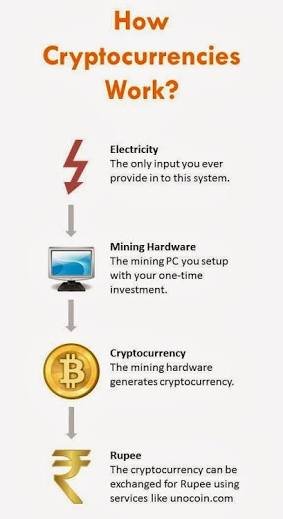Part-1

Cryptocurrency is an encrypted decentralized digital currency transferred between peers and confirmed in a public ledger via a process known as mining.
Below, we take a simplified look at how cryptocurrencies like bitcoin work. First, let’s review the basics and essentials of cryptocurrency, and then we will do an overview of the other properties that have made cryptocurrency what it is today.
The Cryptocurrency Basics
In order to understand how cryptocurrency works, you’ll need to understand a few basic concepts. Specifically:
Public Ledgers: All confirmed transactions from the start of a cryptocurrency’s creation are stored in a public ledger. The identities of the coin owners are encrypted, and the system uses other cryptographic techniques to ensure the legitimacy of record keeping. The ledger ensures that corresponding “digital wallets” can calculate an accurate spendable balance. Also, new transactions can be checked to ensure that each transaction uses only coins currently owned by the spender. Bitcoin calls this public ledger a “transaction block chain.”
Transactions: A transfer of funds between two digital wallets is called a transaction. That transaction gets submitted to a public ledger and awaits confirmation. When a transaction is made, wallets use an encrypted electronic signature (an encrypted piece of data called a cryptographic signature) to provide a mathematical proof that the transaction is coming from the owner of the wallet. The confirmation process takes a bit of time (ten minutes for bitcoin) while “miners” mine (ie. confirm transactions and add them to the public ledger).
Mining: In simple terms, mining is the process of confirming transactions and adding them to a public ledger. In order to add a transaction to the ledger, the “miner” must solve an increasingly-complex computational problem (sort of like a mathematical puzzle). Mining is open source, so anyone can confirm the transaction. The first “miner” to solve the puzzle adds a “block” of transactions to the ledger. The way in which transactions, blocks, and the public blockchain ledger work together ensures that no one individual can easily add or change a block at will. Once a block is added to the ledger, all correlating transactions are permanent and a small transaction fee is added to the miner’s wallet (along with newly created coins). The mining process is what gives value to the coins and is known as a proof-of-work system.
N.B:-continue....wait for part -2
Follow me
Downvoting a post can decrease pending rewards and make it less visible. Common reasons:
Submit
Hi! I am a robot. I just upvoted you! I found similar content that readers might be interested in:
https://cryptolive.org/crypto.html
Downvoting a post can decrease pending rewards and make it less visible. Common reasons:
Submit